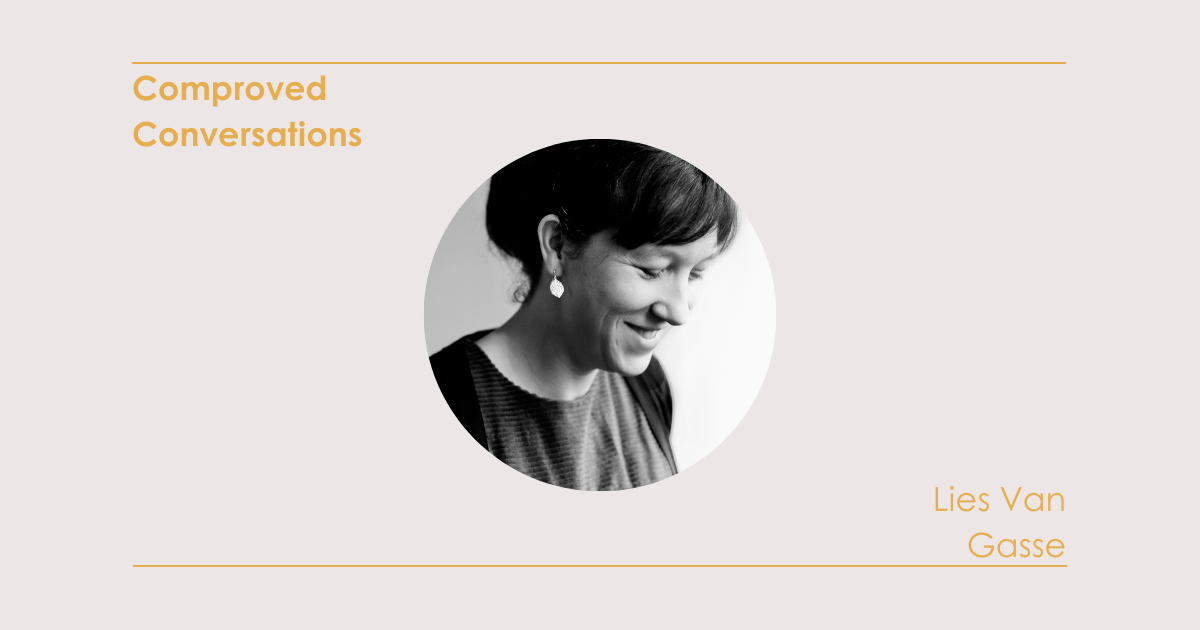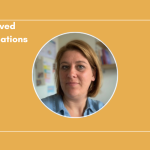
25 Jan Evaluating poems with comparing tool
The Flemish Lies Van Gasse is a poet and illustrator. Her work is characterized by the intertwining of poetry and illustration. She has already won several prizes for this crossmediality. Besides her artistic work, Lies also teaches creative writing to adults and artistic education to children in part-time art education. Furthermore, she teaches the Poetry Writing Course at Utrecht University for the second time this year, together with Laurens Ham. Lies uses Comproved for evaluating poems. We were curious about her experience with the tool!
How did you learn about Comproved?
“I learned about Comproved through my sister Roos (co-founder of Comproved). When I first heard about it, I didn’t immediately see the potential for my classes. I thought it was mainly something for regular education. However, during corona, in part-time art education we also had the gigantic problem of trying to teach qualitatively while not being able to meet our students. All the feedback methods we normally used, such as oral feedback in group, did not work well in an online context. I realized that if we wanted to keep the students that we had to look for other ways to do that qualitatively. Then I experimented with Comproved for the first time and it turned out very well.”
What exactly did you use the tool for?
“My creative writing students had to put together a portfolio for their final assignment. The first-year students, had to write about 5 poems, but the more advanced students had to write an entire cycle of poems. In preparation for the final evaluation, I had the students do a peer evaluation in Comproved. In groups, they had to assess each other’s portfolios and give feedback on strengths and areas of improvement. With that peer feedback, they could then further improve their portfolios. Then I did the judging with some colleagues in Comproved as well. We found that very valuable.”
“Furthermore, I have also used the tool for a translation exercise. The students had translated a poem and in Comproved, for each pair of poems, they had to decide which one was better. They found that easier because the assignment was more defined and because they had to stay close to the original.”
How did you prepare your students to work with the tool?
“In the year we work around the poem, we focus on how to discuss a poem according to the parameters of page layout, imagery, meaning, sound and rhythm. Each of those 5 parameters is addressed separately in class. I have the students analyze example poems by other poets on those parameters. They then answer questions such as ‘what parameters can you detect?’ and ‘what effect does a particular parameter have?’ When they assess each other’s work in Comproved, they also have to give feedback on those parameters.”
Even the students who were initially reluctant to take a computer test did see the benefits of it afterwards. They received much more feedback than was the case with class discussions, after all.
How did your students experience working with the tool?
“My students are very varied in age and educational background, so in the beginning there was some resistance from some of them to working with the computer. They are not all equally computer literate, nor are they all accustomed to working with a tight deadline. But once these obstacles were overcome, the tool was perceived as positive. Even the students who were initially reluctant to take a computer test saw the benefits of it afterwards. They received much more feedback than was the case with class discussions, after all. Also, because I was able to have all groups participate in the assessment together in Comproved, they got feedback from students they had never gotten feedback from before.”
How did the judging go?
“We had to make a pass/fail decision. For that, we used the ranking that Comproved had calculated as a guide. We didn’t follow it completely, but it gave us a rough idea of who was ranked where. The judges were largely in agreement, but there were differences of opinion here and there. Everyone puts their own emphases, of course, and in Comproved that is made very explicit. I find that interesting, by the way. That way the students also learn that there are poetic differences. They have to decide for themselves whether they do something with it in their work or not.”
You also used the tool in a course you teach at Utrecht University. Can you tell us more about it?
“In Utrecht, I am teaching the Poetry Writing course for the second time this year together with Laurens Ham. The purpose of this course is to help students improve their academic writing skills through creative writing. Students from different programs can enroll in this course.”
“Last year at the end of the module, students had to upload their best poem in Comproved and so we held a ‘poetry contest.’ The students’ judgement coincided with ours and we had a deserved and happy winner. That was a fun experiment! However, the focus was too much on the ranking and which work came out on top. Because that is not quite in line with what we want to convey in the course, we decided to drop the contest element this year. For the creative process, feedback is much more valuable, after all.”
They really have to argue why they think something is good or bad, and it is precisely in those arguments that the feedback lies that they can really work with. Usually I have to ask a lot of questions to achieve that kind of feedback, but Comproved forces them to get there by themselves.
What do you think is the biggest advantage of the tool?
“That you are much less tied to class groups and that students receive much more feedback. Moreover, it helps them learn to formulate feedback properly. With my students in part-time art education, I notice that they either give very directive feedback, that they almost rewrite the text. Or that they give validating feedback, indicating only what they think is good or bad. But in an assessment in Comproved, that’s not enough. Because they have to weigh the same text multiple times and each time against a different text, they are challenged to dive deeper into the text. They really have to argue why they think something is good or bad, and it’s in those arguments that the feedback lies that they can really work with. Usually I have to ask a lot of questions to achieve that kind of feedback, but Comproved forces them to get there by themselves.”
Would you recommend the tool to other teachers?
“Yes, definitely! And I already have. I do have to say that in part-time art education there is a lot of resistance to that element of comparison. While I personally think that’s a false argument. They don’t think it’s okay for us to weigh one student against another. But when you give two students the same score while judging, you’re always going to see if their performance is really equal, right? Actually, you are very often comparing. I think the difficult thing with Comproved is that you always have to make a choice; you can’t consider two works equally good. Usually that happens quite regularly.”
Do you have any tips for people who want to get started with the tool?
“I do recommend guiding the feedback a little bit by giving the students a set of questions to answer. You want the feedback to be as specific as possible, but because that’s something very difficult, you have to support your students a little bit in that. For example, with a creative product, part of the question is ‘does the product respond to the assignment?’ A subsequent question is then ‘is the result strong?’ Because a work can respond to the assignment but not be strong or vice versa. So it’s kind of important to pick that apart.”
Are you inspired and want to get started with the comparing tool yourself? Contact us!




